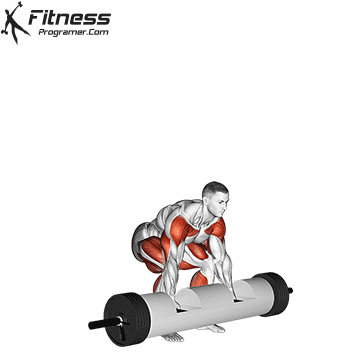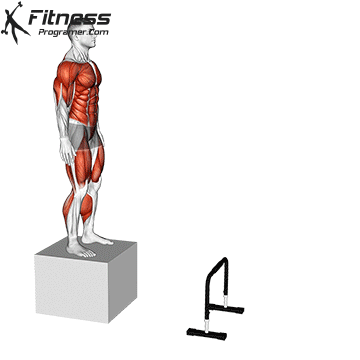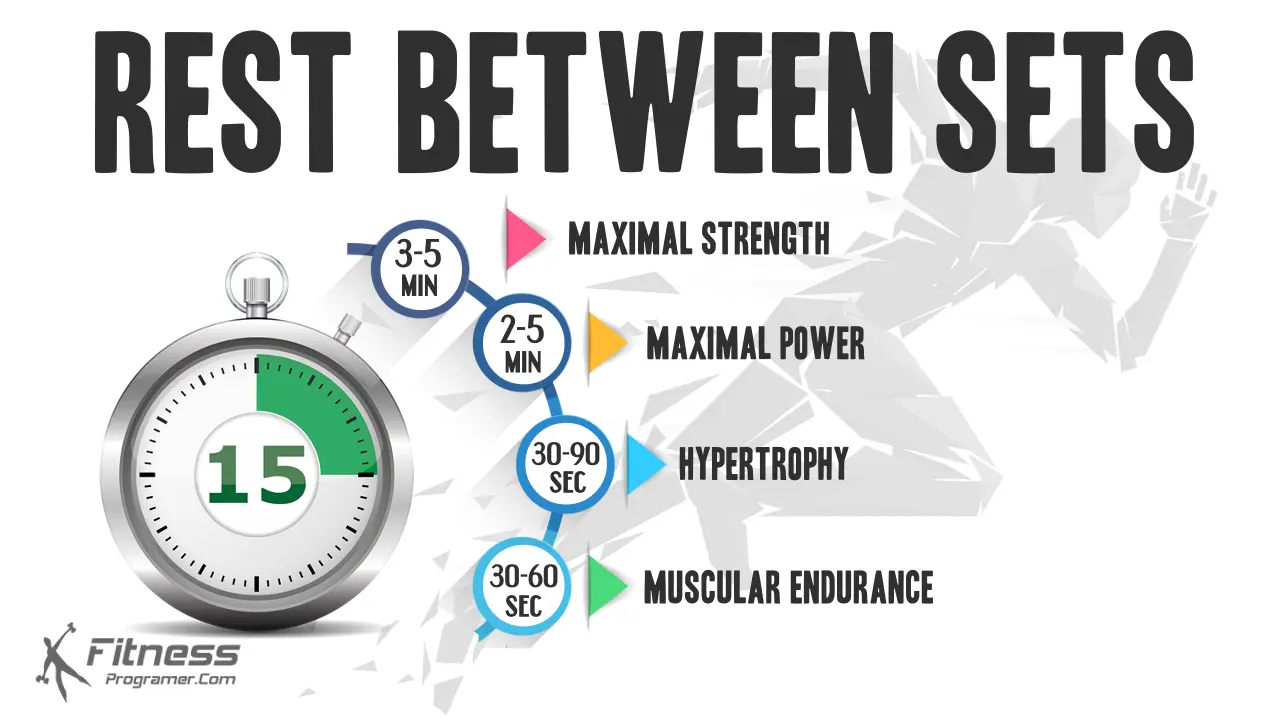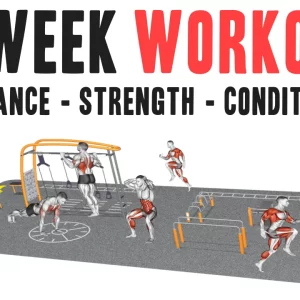Contents
- The Role of Rest Intervals in Strength Training
- How Rest Intervals Shape Your Workout
- Relationship Between Energy Systems and Rest Intervals
The rest interval between sets is a critical variable to consider in your strength training program. Imagine you’re in the gym, lifting weights with the goal of building muscle or increasing your strength. You’ve likely noticed that your trainer or workout plan recommends specific rest intervals between sets. But have you ever wondered why these recommendations are made, and what difference it makes?
Strength training is a cornerstone of physical fitness, offering a multitude of benefits such as increased muscular strength, endurance, hypertrophy (muscle growth), and muscular power. Among these variables, the rest interval between sets is a critical determinant that affects both immediate responses and long-term adaptations to resistance training programs. When properly prescribed in conjunction with other essential variables like volume and intensity, the duration of your rest intervals can significantly impact the efficiency, safety, and overall effectiveness of your strength training routine.
The Role of Rest Intervals in Strength Training
At first glance, the rest interval between sets may seem like a simple break to catch your breath or sip some water. However, it’s far more than that. When you engage in resistance exercises, your muscles are put through a series of demanding contractions. The acute responses to rest intervals are crucial for maximizing your performance during a single workout session. The rest interval between sets determines how well your muscles can recover before the next bout of effort. It’s a delicate balance that influences training outcomes significantly.
How Rest Intervals Shape Your Workout
When you engage in physical exercise, your body relies on a complex network of energy systems to provide the fuel needed to power through your workouts. Whether you’re pursuing strength gains, hypertrophy, or cardiovascular fitness, optimizing your rest intervals is a key strategy. By tailoring your rest periods to match the demands of each energy system, you can fine-tune your workouts, enhance performance, and work efficiently toward your fitness objectives.
Relationship Between Energy Systems and Rest Intervals
Our muscles need time to recover and replenish energy stores after a set of strenuous exercise. The length of this rest interval can significantly impact your workout’s effectiveness, depending on your goals.
To understand the importance of rest intervals, we must first delve into the three primary energy systems your body uses during exercise: the phosphagen system, the glycolytic system, and the oxidative system.
1. Phosphagen (Anaerobic Alactic) System
It is responsible for providing rapid and immediate energy for short bursts of high-intensity exercise.
- Immediate Energy: The phosphagen system provides energy almost instantly, making it ideal for short, explosive efforts where energy demand spikes quickly.
- Limited Duration: While the system can generate energy rapidly, it has a limited capacity. The phosphagen system can sustain high-intensity efforts for only around 10-15 seconds.
- No Oxygen Required: Unlike the aerobic energy system, the phosphagen system operates in the absence of oxygen. It doesn’t rely on oxygen to produce energy, which makes it suitable for anaerobic activities.
The phosphagen system is your body’s go-to source for immediate, high-intensity efforts. Think of heavy lifting, sprinting, or explosive movements like jumping. This system relies on stored ATP (adenosine triphosphate) and creatine phosphate for energy.
Why Rest Intervals Matter: Adequate rest intervals are essential for ATP regeneration within the phosphagen system. A rest period of 3-5 minutes between sets is recommended for activities that heavily tax this system. This recovery time allows your body to replenish ATP stores, ensuring you can maintain peak performance during subsequent sets. Strength training heavily depends on the phosphagen system, making proper rest intervals crucial for maximizing gains.
Three minutes provides ample time for full phosphocreatine replenishment, but it’s essential to be mindful that extended rests exceeding five minutes can result in a decline in workout intensity due to cooling off.
What exercises use the Phosphagen energy system?
1- Maximal Strength Workouts:
Ideal Rest Interval Between Sets for Maximal Strength: If your goal is to increase your maximum strength, longer rest intervals are essential. When working with heavy loads (1-6 reps), resting 3-5 minutes between sets allows you to maintain training intensity. It ensures that you can exert maximum effort for each repetition, leading to strength gains over time.

2- Maximal Muscular Power:
Ideal Rest Interval Between Sets for Muscular Power: Muscular power is all about explosive movements. For exercises like plyometric jumps, a minimum of 2-3 minutes of rest between sets is necessary. This extended rest interval enables your muscles to recover fully, so you can perform each repetition with maximal force.

3- Sprints:
Short Sprints with Maximum Effort (10-30 seconds): Short sprints make heavy use of the phosphagen system. These activities require rapid and powerful muscle contractions. Sprinting at maximum effort for 10-30 seconds or performing plyometrics typically relies on the phosphagen system for energy. For short sprints, which typically last between 10 to 30 seconds, rest intervals of 2-5 minutes are ideal. These longer breaks allow your body to fully recharge its phosphagen system, ensuring that you can sprint at maximum effort for each repetition.

Other Activities Using the Phosphagen System:
The phosphagen system primarily powers activities that require maximal effort and explosiveness, typically lasting for a few seconds up to around 15 seconds. Here are some examples:
- Sprinting: Short-distance sprints, such as the 100-meter dash or even shorter bursts during a longer run, rely heavily on the phosphagen system.
- Weightlifting: Powerlifting and Olympic weightlifting exercises like squats, deadlifts, clean and jerks, and snatches engage the phosphagen system for the initial explosive movements.
- Jumping and Plyometrics: Vertical jumps, broad jumps, box jumps, and other explosive jumping exercises predominantly use the phosphagen system.
- Throwing: Activities like shot put, discus, and javelin throwing require quick bursts of explosive power, tapping into the phosphagen system.
- High-Intensity Interval Training (HIIT): Short, intense bursts of exercise followed by brief rest periods, as seen in many HIIT workouts, heavily engage the phosphagen system.
- Sprint Swimming: Competitive swimmers, especially in shorter races like the 50-meter freestyle, heavily rely on the phosphagen system for their explosive starts and turns.
2. Glycolytic (Anaerobic Lactic) System
The glycolytic system, also known as the anaerobic lactic system, is one of the three primary energy systems your body relies on during physical activity. It plays a crucial role in providing energy for moderate to high-intensity efforts lasting from around 30 seconds up to approximately 2 minutes.
- Rapid Energy Production: The glycolytic system can produce energy quickly, making it suitable for activities that demand immediate bursts of power.
- Limited Duration: While it provides rapid energy, the glycolytic system has a finite capacity. It can sustain high-intensity efforts for a limited duration, typically up to around 2 minutes.
- Anaerobic: The glycolytic system operates without the need for oxygen. It can function in oxygen-deprived conditions, which is why it’s suitable for anaerobic activities.
The glycolytic system comes into play during moderate-duration efforts, typically lasting between 30 seconds and 2 minutes. Activities like bodybuilding exercises, high-intensity interval training (HIIT), and even short sprints rely on this system. The glycolytic system primarily utilizes stored glycogen, which is a form of glucose stored in your muscles and liver. This stored glycogen is broken down into glucose, which is then converted into ATP (adenosine triphosphate), the body’s primary energy currency.
Why Rest Intervals Matter: The length of the rest interval between sets becomes crucial for the glycolytic system. It directly affects the replenishment of glycogen stores in your muscles. Short rest intervals (30 seconds to 2 minutes) are often used to maintain the intensity of glycolytic workouts. It helps manage lactic acid buildup and promotes sustained performance. However, the exact duration can vary depending on the specific exercise and training goals. Effective rest intervals ensure that you have enough energy to perform optimally during each set.
Energy System Overlaps:
It’s important to note that there can be overlaps between energy systems, especially in complex training programs or workouts involving multiple exercise modalities. For example, compound movements like squats or deadlifts may engage both the phosphagen and glycolytic systems.
What exercises use the Glycolytic energy system?
Hypertrophy (Bodybuilding) Workouts:
Ideal Rest Interval Between Sets for Hypertrophy: Bodybuilders often perform resistance exercises with moderate to heavy weights in the 8-12 rep range. This intensity and duration of effort tap into the phosphagen and glycolytic system, promoting muscle hypertrophy. To stimulate hypertrophy, consecutive sets should be performed before full recovery has taken place. Shorter rest intervals of 30-90 seconds between sets have been linked to higher acute increases in growth hormone levels, contributing to muscle growth. If your goal is muscle growth, shorter rest intervals (30-90 seconds) between sets create metabolic stress, contributing to hypertrophy.

Other Activities Using the Glycolytic System:
- High-Intensity Interval Training (HIIT): HIIT workouts involve short, intense bursts of exercise followed by brief rest periods. Activities like burpees, kettlebell swings, or jump squats during HIIT workouts heavily involve the glycolytic system.
- Sprint Intervals: Short sprints (e.g., 200-400 meters) are high-intensity efforts that primarily use the glycolytic system. Sprinters rely on rapid glycogen breakdown to sustain their explosive speed.
- CrossFit Workouts: CrossFit incorporates a variety of exercises, such as kettlebell swings, box jumps, wall balls, and rope climbs, which often fall within the glycolytic energy system’s time frame.
- Rowing and Biking Sprints: Rowing sprints on a rowing machine or high-intensity cycling sprints, such as those in indoor cycling classes, engage the glycolytic system for energy.
- Circuit Training: Circuit training involves moving quickly between various resistance and cardio exercises with minimal rest. The combination of exercises and short rest intervals challenges the glycolytic system.
- High-Intensity Sports: Sports like basketball, soccer, and hockey involve intermittent high-intensity efforts, such as sprints and rapid changes in direction, which require the glycolytic system.
- Combat Sports: Activities like boxing, MMA, and wrestling feature intense bursts of activity interspersed with brief periods of rest, making the glycolytic system a primary energy source.
- Interval Running: Interval running workouts, which alternate between high-speed sprints and recovery jogs, fall within the glycolytic system’s range.
3. Oxidative (Aerobic) System
It plays a fundamental role in providing energy for low to moderate-intensity, sustained efforts lasting longer than approximately 2 minutes.
- Endurance: The oxidative system is designed for prolonged efforts and endurance. It can provide energy for activities ranging from several minutes to hours, depending on the individual’s aerobic capacity and conditioning.
- Efficiency: While it produces energy more slowly compared to the other systems, the oxidative system is highly efficient, allowing the body to sustain moderate-intensity efforts over extended periods.
- Oxygen Dependent: As the name suggests, the oxidative system is dependent on oxygen. It operates in the presence of oxygen, which is transported to muscle cells by the cardiovascular system.
The oxidative system is the workhorse for long, lower-intensity exercises, such as jogging, cycling, and steady-state cardio. It utilizes carbohydrates, fats, and, as a last resort, proteins for energy. This system is designed for endurance and sustains your body during extended activities.
Why Rest Intervals Matter: While the oxidative system doesn’t require extended rest intervals during the workout, shorter rest periods (30 seconds to 1 minute) help maintain exercise intensity. These short breaks are common in endurance training, where you aim to keep your heart rate elevated and promote cardiovascular fitness. Effective rest intervals ensure you strike the right balance between intensity and endurance, helping you achieve your aerobic fitness goals.
What exercises use the oxidative energy system?
Muscle Endurance:
Ideal Rest Interval Between Sets for Muscle Endurance: When training for muscular endurance, the key is to keep moving. You can structure your workouts in a circuit format, with short rest intervals (around 30 seconds) between exercises involving different muscle groups. This approach helps maintain endurance performance throughout the workout.

Other Activities Using the Oxidative System:
The oxidative system primarily powers activities that require sustained, low to moderate-intensity effort and endurance. Here are some examples:
- Long-Distance Running: Distance running events, such as marathons and half-marathons, primarily rely on the oxidative system for energy production due to the sustained effort required.
- Cycling: Long-distance cycling, road races, and endurance cycling events engage the oxidative system as cyclists maintain a steady, moderate pace over extended periods.
- Swimming: Competitive swimming events that involve continuous laps or open-water swims depend on the oxidative system for sustained energy.
- Rowing: Rowing competitions, especially those involving long distances, heavily rely on the oxidative system to maintain a consistent pace.
- Triathlons: Triathletes engage the oxidative system across various disciplines, including swimming, cycling, and running, making endurance a critical component of their performance.
- Low-Intensity Cardio: Activities like brisk walking, leisurely cycling, or light jogging primarily engage the oxidative system for energy production.
- Aerobic Classes: Group fitness classes that focus on steady-state, sustained aerobic exercise, such as aerobic dance or step aerobics, predominantly rely on the oxidative system.
Conclusion:
In conclusion, the rest interval between sets is not something to overlook in your fitness journey. Whether you’re seeking strength, power, hypertrophy, or endurance, understanding how to adjust your rest intervals can make a world of difference. Fine-tuning your rest intervals in alignment with your goals and workout plan will help you optimize your training, minimize the risk of injury, and, most importantly, achieve the results you desire. So, the next time you hit the gym, remember that those moments of rest are just as critical as the moments of exertion.
References:
- Effects of Rest Interval Duration in Resistance Training on Measures of Muscular Strength: A Systematic Review PMID: 28933024
- Belmiro Freitas de Salles, Roberto Simão, Fabrício Miranda, Jefferson da Silva Novaes, Adriana Lemos, Jeffrey M Willardson. Rest interval between sets in strength training PMID: 19691365
- A brief review: factors affecting the length of the rest interval between resistance exercise sets PMID: 17194236
- J Nutr Metab. 2010: Interaction among Skeletal Muscle Metabolic Energy Systems during Intense Exercise. PMCID: PMC3005844
- Bogdanis GC, Nevill ME, Lakomy HK, Boobis LH. Power output and muscle metabolism during and following recovery from 10 and 20 s of maximal sprint exercise in humans. PMID: 9715738
- Strength & Conditioning Journal Willardson, Jeffrey M. A Brief Review: How Much Rest between Sets?



